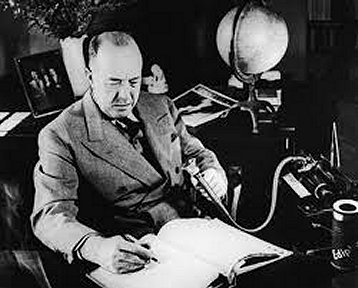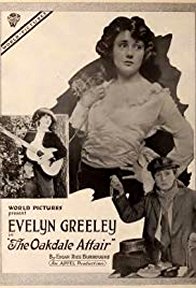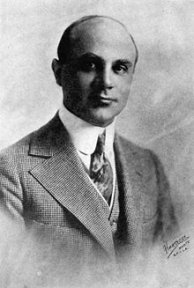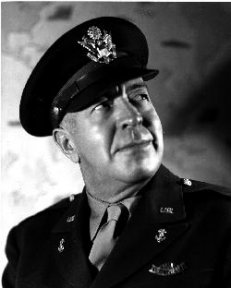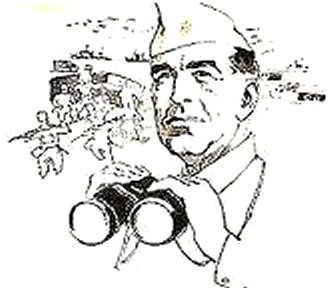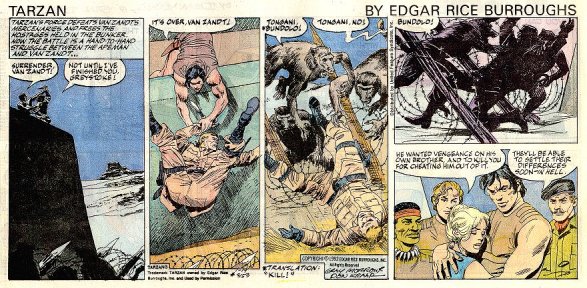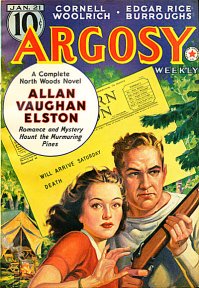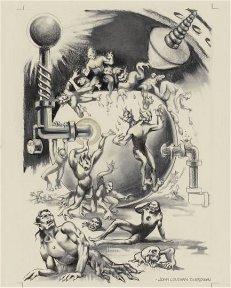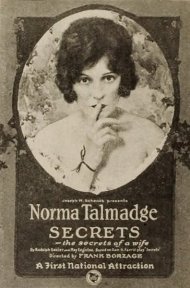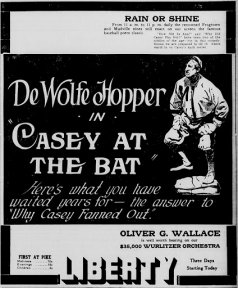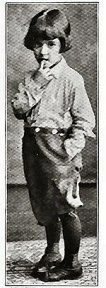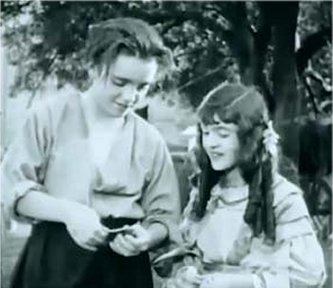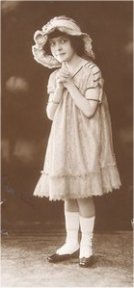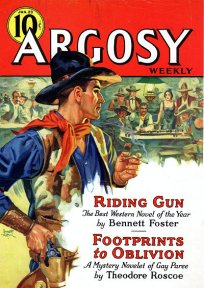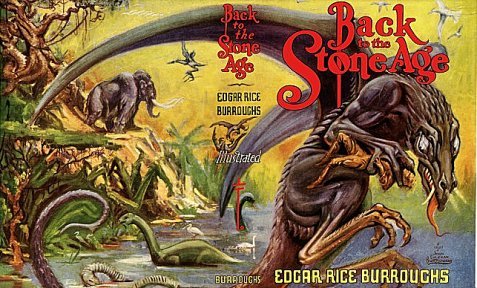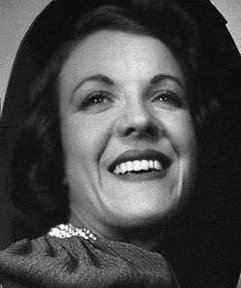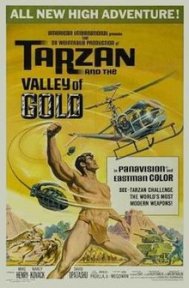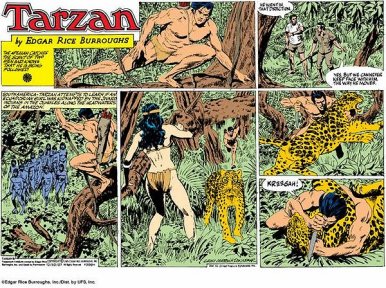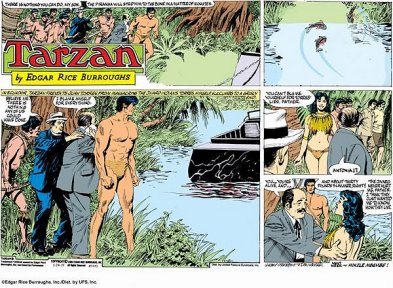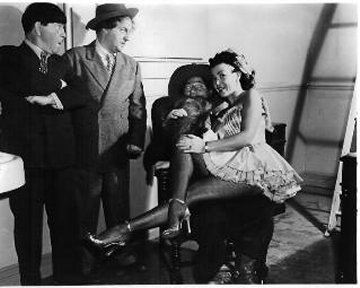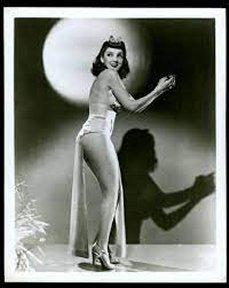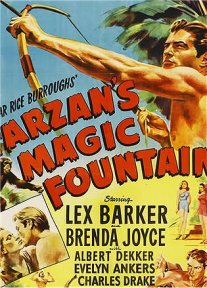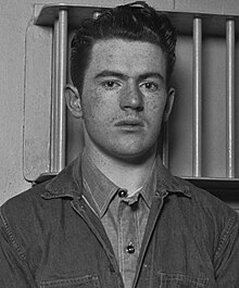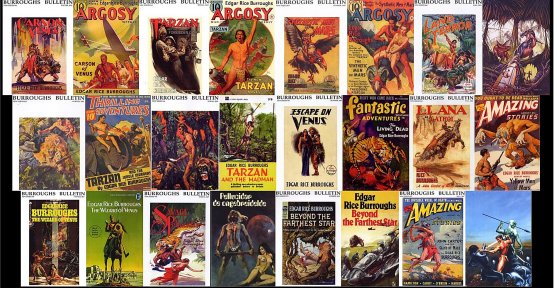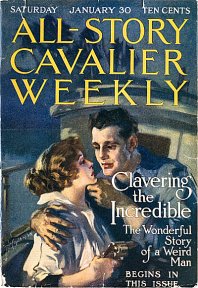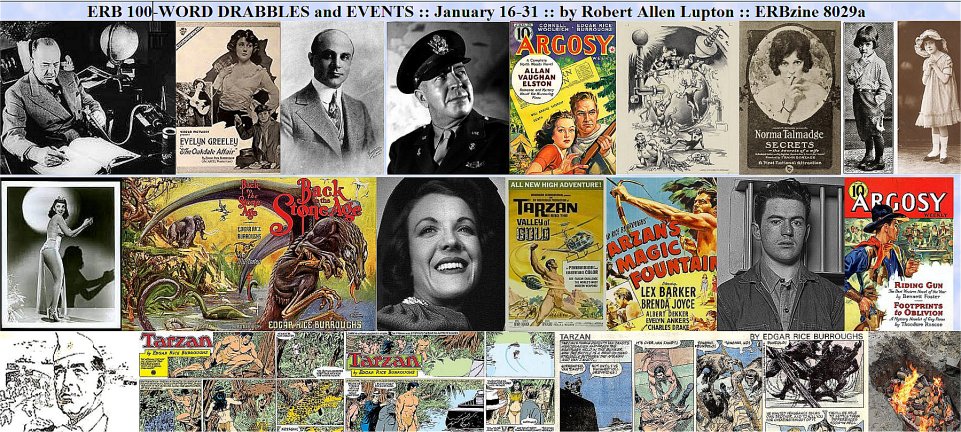
Official Edgar Rice Burroughs Tribute and Weekly Webzine Site Since 1996 ~ Over 15,000 Webpages in Archive Volume 8029a 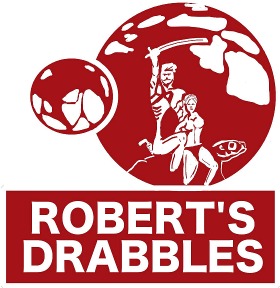 |
ERB 100-Word Drabbles & Events
JANUARY VII Edition :: Days 16-31
by Robert Allen Lupton
BACK to Days 1-15 at ERBzine 8029
With Collations, Web Page Layout and ERBzine Illustrations and References by Bill Hillman
The drabble for today, “Rhyme Time,” was written by Edgar Burroughs and it is an excerpt from his column dated January 16, 1942. Ed wrote quite a few poems during his lifetime and he no doubt recognized the difference between good poetry and bad poetry. It's easy for me. If I wrote it, it's bad poetry.
RHYME TIME
Among the other horrors of war which curdle our blood is the riotous flood of poetry that has broken into print. But it just goes to show the courage and ingenuity of the American mind. None but a brave and ingenious man would attempt to rhyme "time" and "whine" or "come" with "home" or -- but why go on? Leave it to the poets; they will go on forever but whether the English language will be able to stand the strain, I wouldn't know.Peavy Peabody reports that Grandpa Peabody is working on a rubber roof for air raid shelters.
MOVIE TRAINING, SIRJanuary 17: On this day in 1878, actor and director Oscar Apfel, who directed what is considered the first authorized film based on the works of Edgar Rice Burroughs, “The Oakdale Affair,” was born in Cleveland, Ohio.
Information about the film, The Oakdale Affair,"Apfel first directed for Thomas A. Edison, Inc. in 1911–12, where he made the innovative short film The Passer-By (1912). He also did some experimental work at Edison's laboratory in Orange, on the Edison Talking Pictures devices.When Apfel left the Edison company, he joined Reliance-Majestic Studios, remaining with them 18 months. In 1913, he became one of two main directors for the Jesse Laskyn Feature Play Company, the other being Cecil B. DeMille. In late 1914, Apfel left the Lasky Company and directed for various companies into the 1920s. His first move was to the producing staff of the William Fox Corporation, where he directed a series of pictures.The drabble for today, “Movie Training, Sir,” was inspired by Apfel, who left a promising business career to become a stage actor and then a filmmaker, a move not unlike running off to join the circus.
MOVIE TRAINING, SIR
Evelyn Greeley on the set of “The Oakdale Affair,” said, “Mr. Apfel, how’d you get to be a director?”“I was a businessman. I quit to become an actor. Next, I worked for Mr. Edison making moving pictures.”“What experience did you have.”“I’d been to a theatre, but I’d never seen a camera, let along been on a film set.”“Sounds scary.”“It wasn’t. My plan was to learn as much as I could before anyone figured out that I didn’t know what I was doing. No matter what, I’d know more when I left than when I arrived.”
A PENNY A POINTJanuary 18: On this day in 1943, the world’s oldest war correspondent, Edgar Rice Burroughs who was on assignment in New Caledonia, was awarded a new rank, “Assimilated” 2nd Lieutenant. The commanding officer at the time was Brigadier General Alexander M. Patch, Jr.
In the army, an "assimilated rank" refers to a rank given to a person typically, but not necessarily from a different branch of service, like a nurse, which is equivalent to a commissioned officer rank but does not technically make them a commissioned officer; essentially, it aligns their status and responsibility with a specific officer rank without granting full officer privileges. It allowed Ed access to the Officers’ mess and the Officers’ club, such as it was.The fictional drabble for today was inspired by Ed’s new rank as an assimilated 2nd Lieutenant. Just for the record, a rubber of bridge can result in a score swing of over a thousand points, or ten dollars at a penny a point. A Grand Slam at those small seeming stakes could be worth $20.00. High stakes in the 1940s.
A PENNY A POINT
General Patch said, “Ed, I hear you play pretty good bridge. My partner got transferred.”“If you’re asking me to be your partner, I accept, but I’m not allowed in the Officers’ Club..”“No worries, I’ll make you an assimilated second lieutenant. I bid standard Goren.”“So do I. I think I a man of my experience should at least be a Major or even a Colonel.”“One step at a time, Lieutenant Burroughs. Before we discuss promotion., we pay for a penny a point. Captains and up cover their own losses.”
“I see. Lieutenant Burroughs reporting for duty, Sir.”
BEER ON ICE -- PIG IN THE GROUNDJanuary 19: On this day in 1942, another of Edgar Rice Burroughs “Laugh It Off” columns was published in the Honolulu Star Bulletin. ERB intended the columns to “keep spirits high,” but he was becoming more discouraged because of editing and censorship by the local authorities and the military.
All of ERB's Laugh It Off columns are available to read at: https://www.erbzine.com/mag0/0001.htmlToday’s drabble is, “Beer On Ice – Pig in the Ground,” and it was excerpted from Ed’s column, January 18, 1942.
BEER ON ICE -- PIG IN THE GROUND
A reader, Junia Kupihea, wrote these words about my column: "It may not be of any literary value: it may not make any sense at time." She takes the words right out of my mouth, but then spoils it all by contributing to my delinquency with the following: A fat Hawaiian was nagged by his wife into starting an air raid shelter. He dug down a couple of feet and encountered coral which required a cold chisel and hammer. He was disgusted. Then he had a happy thought -- he gave a luau and cooked the pig in the hole.
RETRIBUTIONJanuary 20: One this day ago 1992, the Gray Morrow illustrated and Don Kraar scripted Sunday Tarzan story arc, The Kalahari, concluded after running for fourteen Sundays.
In the story, Jane and Meriam, Korak’s wife, are on a commercial airline flight which is hijacked and landed in the Kalahari Desert. The hijacking is a scheme to lure Tarzan to his death. Tarzan comes to their rescue with the assistance of a tribe of angry baboons.Read the entire story at: https://www.erbzine.com/mag35/3539.htmlThe drabble for today is, “Retribution,” inspired by the story arc, a wonderful film, and the understanding that Jane, was, after all, a Princess Bride.
RETRIBUTION
Colonel Pieter van Zandt, captured Jane and Meriem, Tarzan’s daughter-in-law, in order to trap Tarzan and he threatened Tarzan.
“My name is Van Zandt. You killed my brother. Prepare to die.”“My name is Tarzan. You kidnapped my wife. Prepare to die.”A baboon screeched. Van Zandt said, “What’s the monkey want?”‘He said, “My name is Tangor. You killed my father. Prepare to die.”The baboon jumped on Van Zandt and gnawed his face off.Jane arrived and said, “Yuck! What happened here.”“The angry baboon bit his face several times.”Jane smiled. “I see. Monkey see, the monkey chew.”
ARTIFICIAL STUPIDITY
January 21: On this day in 1939, Argosy Weekly published part three of Synthetic Men of Mars. Publishing details, several illustrations, and an electronic version of the novel are available at: https://www.erbzine.com/mag7/0737.html.
<> The cover for the issue by Emmett Watson illustrated the story, “Death Due North” by Allan Vaugh Elston, billed as a North Woods romance and mystery. Elston was a railroad man, engineer, rancher, and writer, who wrote about 100 stories and novels for the pulps. The prolific Sookie Allen, Cornell Woolrich, and Johnston McCulley also contributed stories.The drabble for today, “Artificial Stupidity, was inspired by “The Synthetic Men of Mars,” a story about the creation of artificial humanoids on Barsoom, and by the ongoing issues with intelligent machines, computers, etc.
ARTIFICIAL STUPIDITY
John Carter confronted the old inventor, Ras Thavas. “Your vat grown humanoid creatures are dangerous. They never quit fighting. They never give up.”
Thavas shrugged, “All they know is to fight and kill. Even if you chop them into little pieces, they keep fighting.”
Carter said, “What is motivating them? They don’t seem to think for themselves. Have you endowed them with some form of artificial intelligence?”
“Artificial Intelligence! Aren’t you paying attention? Any creature that will keep fighting until it’s hacked into little pieces isn’t intelligent. it’s stupid. And trust me, their stupidity isn’t artificial, it’s the real thing.”
SILENCE ISN'T GOLDENJanuary 22: On this day in 1910, Actress Mae Giarci was born in Los Angeles, California. Mae played the young Meriem, Korak’s love interest and future wife, in the silent film, The Son of Tarzan.” Actress Manilla Martan played Meriem as an adult.
Mae was a child actress and her first film was “ The Crest of Von Endheim” in 1915 and her last film was “The Godless Girl” in 1928. She never made a talking picture. . She was also known as May Giraci, May Garcia, May Geraci, May Giracci, May Giracia and Tina Rossi, was an American child actress who appeared in silent films between 1915 and 1929.She was discovered by director Cecil B. DeMille and worked with him and his brother William C. DeMille. She died of colon cancer in 2006. After she left the film industry, she married Herman Platz, to whom she was married for 75 years until her death in 2006.Details about the film, “The Son of Tarzan,” are located at: https://www.erbzine.com/mag5/0589.htmlThe 100 word drabble for today, “Silence Isn’t Golden,” was inspired by Mae Giarci,, born Tina Rossi, her career and her marriage to Herman Platz.
SILENCE ISN'T GOLDEN
Herman Platz introduced himself to his blind date, Mae Giarci, and asked. “I feel as though we’ve met.”
Mae replied, “We haven’t, but I used to be in pictures.”“I knew I recognized you. I’ve planned dinner at the Ritz and then we’ll screen that new African film, “Trader Horn,” and then maybe drinks. Okay?”
“One step at a time. We’ll see how it goes.”“Just let me know.”“Certainly, just because I never spoke on screen doesn’t mean I won’t speak up. Make me unhappy and I’ll tell you soon enough.”
“Sounds like the beginning of a beautiful friendship.”
STONE AGE LOGIC<>January 23: On this day in 1937, Argosy Weekly published part three of Back to the Stone Age. The issue’s cover by Emmett Watson illustrated the beginning of the Bennett Foster novel, “Riding Gun.” Foster contributed about 50 stories to the pulps. Other contributors to the issue included Stookie Allen, John St. John, and Theodore Roscoe. Some dude named L. Ron Hubbard and a short story, The Flying Trapeze, in the issue. John St. John was a pseudonym for the writer, Richard Sale, not to be confused with artist, J. Allen St. John.
Argosy published Edgar Rice Burroughs’ fifth Pellucidar novel as “Seven Worlds to Conquer,” but when ERB Inc. published the novel in September 1937, it was retitled as “Back to the Stone Age.”Everything you wanted to know about the novel, including an EBook is available at: https://www.erbzine.com/mag7/0745.htmlThe drabble for today, “Stone Age Logic,” was inspired by the story, “Seven Worlds to Conquer,” published in book form as “Back to the Stone Age.” A trodon is a pterodactyl.
STONE AGE LOGIC
Von Horst, a zeppelin pilot, was lost in the savage world of Pellucider, the land at the Earth’s core. An escaped female slave, La-ja saved him from being eaten.
“Thank you.”“Stupid. How’ve you lived long enough to grow up? ““I’m a German officer and the captain of an airship.”“Airship?”“Yes, I can fly.”“Right. Stupid and a liar. Nothing flies except hungry trodons.”“I’m quite intelligent I speak the truth.”“I doubt it, but you’re cute. Come with m
CROSS-EYED TITMOUSEJanuary 24: On this day in 1941, the world’s oldest war Correspondent, ERB wrote a letter home to his daughter Joan complaining, “I have had so many refusals lately that I have lost confidence in myself."
Rejections are a part of a writer’s life. Editors reject stories for a myriad of reasons, only some of which have anything to do with the quality of the writing or the story. It can be too long, it can be too short, it can not be a good fit for the editor’s vision of the magazine, or the writer could have named a character, Jack, and the editor hated “Jack and the Beanstalk” or was bullied by someone named Jack. It’s usually subjective, but sometimes it’s not.Sometimes the writing is bad or the story has gapping holes in it. In my care, I publish about 25 stories written by others every year out of about 100 submissions. One of my rules is that if you hurt or kill dogs or cats, you’re out of here and I won’t even read your work in the future. That's subjective, I know. You can kill a hundred people or a legion of trolls and I don't bat an eye, but if you hurt one puppy....Read the entire letter at: https://www.erbzine.com/mag10/1022.html#January%2024Anyway the drabble for today, “Cross-eyed Titmouse,” is excerpted from that letter and it was written by Edgar Rice Burroughs.
CROSS-EYED TITMOUSE
I’ve had so many refusals I’ve lost confidence in myself. I’m getting damned sick of hearing people apologize for reading my stories, or pretend to grouse because they’ve had to read them to their children, or say they used to read them in kindergarten but haven’t read any for years. I’ll come right back at the next one with a retort such as: "Well, you homely looking abortion, if you had the brains of a cross-eyed titmouse you'd keep your mouth shut instead of knocking inspired literature that’s entertained a hundred million people for over a quarter of a century.”
OBJECTS ARE CLOSER THAN THEY APPEARJanuary 25: On this day in 1965, filming began on ‘Tarzan and the Valley of Gold.” The Sy Weintraub film featured Mike Henry as Tarzan. The cast included Manuel Padilla Jr. and Nancy Kovak. This was Henry’s first outing as Tarzan. Filmed entirely in Mexico, early drafts of the script were titled “Tarzan and the Treasure of Tucumai” “Tarzan ’65,” and “Tarzan ‘66”
Details about the film the Fritz Leiber book it inspired, and several photographs are available at: https://www.erbzine.com/mag2/0210.htmlThe drabble for today, “Objects are Closer Than They Appear,” was inspired by the on location filming of “Tarzan and the Valley of Gold.”
OBJECTS ARE CLOSER THAN THEY APPEAR
Mike Henry shook his head and dropped a rope with a hand grenade attached to the ground.Director Robert Day said, “What’s up. Mike.”“This scene is stupid. I'm supposed to throw a hand grenade at a helicopter that’s flying at least 200 feet over my head.”
“You’re Tarzan, not Mike. Tarzan can do it.”“I think not. Gravity, you know.”Day continued, “You're thinking in American, but we’re filming in Mexico. They measure in meters, not feet. The helicopter is only about 60 meters above you.”
“Never mind, I can sling this grenade that far."“Gracias.”“Da nada.”
APPEARANCEJanuary 26: On this day in 1986, the Gray Morrow / Don Kraar Tarzan Sunday newspaper story arc, The Forests of Eden, concluded after a run of twelve weeks. All twelve pages have been faithfully reproduced and are available at: https://www.erbzine.com/mag35/3514.html
Tarzan goes to South Africa to help a friend of D’Arnot, Emillo Vargas, find his daughter who he believes to have been taken by the Jivaro tribe, thought to be headhunters. Tarzan finds Antonia Vargas living peacefully with the Jivaro and teaching them to adapt to a changing world. The two of them discover that a man named Torres had been stealing from Antonia’s father and blaming the Jivaro tribe. In the end, the evil Torres is forced to try to escape Tarzan, but the piranha are waiting.The drabble for today is, “Appearance,” and it was inspired by the story arc, “The Forests of Eden.”
APPEARANCE
Tarzan saved Emillo Vargas from the thief and murderer, Juan Torres. Vargas’s daughter, Antonia, who had been hiding from Torres with the Jivaro, a tribe in the Amazon forest, was with Tarzan.
Torres sneered. “This is my jungle, Tarzan. I know it better than you. You should go back to Africa. You’ll never catch me.”
He dove into the river and was quickly swarmed by piranha and torn to pieces.Tarzan said, “I misjudged him. He looked like a good and honest man to me.”Emillo said, “To me, as well.”Antonia said, “Whatever. Today he looks like fish food.”
REVOLTING DEVELOPMENTJanuary 27: On this day in 1918, actress Suzanne Ridgeway, who appeared in “Tarzan’s Magic Fountain,” was born in Los Angeles, California. Her name at birth was Suzanne Parsons, but she took the screen name, Suzanne Ridgeway. She also used the names, Suzy Marquette and Susan Ridgeway. She was the tall thin brunette is several short Three Stooges films.
In addition to “Tarzan’s Magic Fountain, she appeared in “Around the World in 80 Days, Citizen Kane, Jungle Goddess, Mighty Joe Young, Gone With the Wind, Casablanca, and 290 more films and television shows, including Perry Mason.Everything you every wanted to know about the film, “Tarzan’s Magic Fountain,” is located at:The fictional drabble for today, “Revolting Development,” was inspired by Suzanne’s long career, especially her time with the Three Stooges. Certainly. Nyuk, nyuk nyuk.
REVOLTING DEVELOPMENT
On the set of Perry Mason, Raymond Burr, offered Suzanne Ridgeway a cup of coffee. “Suzanne, I remember you from a Tarzan film. I made one of those myself.”
“Yes, I resemble that remark. A small role in Tarzan’s Magic Fountain.”“That’s right, you were the beautiful girl in several Three Stooges’ films.”“I was a victim of circumstances.”“What was your role in Tarzan’s Magic Fountain.”“Raymond, I played a pilot.”“Pilot?"“I picked up the food on one side of the village and piled it on the other.”“I'm sorry I asked. What a revolting development this is.”
PENGUIN PERSONJanuary 28: On this day in 1928, the third Edgar Rice Burroughs article about the William Hickman murder trial was published in the Los Angeles Examiner. Burroughs wrote thirteen articles about the trial. The led for the article was:
“BURROUGHS CALLS HIM 'INSTINCTIVE CRIMINAL'Hickman Has Only Anatomical Resemblance to Man;His Type Menaces Society and Should Be Exterminated, Declares Writer”Spoiler alert for the rest of this paragraph. Hickman was found guilty of the murder of Marion Parker and hanged.Ed’s was a “newspaper correspondent' covering the trial for the LA Examiner, foreshadowing his role as a war correspondent thirteen years later.Read all of ERB’s articles about the trial on https://www.erbzine.com Start at this link: https://www.erbzine.com/mag17/1768.htmlThe 100 word drabble for today, Penguin Person, is excerpted from that article and of course, it was written by Edgar Rice Burroughs.
PENGUIN PERSON
It is not strange that the young man. William Hickman, is self-possessed and calm, as nothing has occurred as yet during the proceedings to excite a neurotic canary bird, but I am confident that nothing can happen to ruffle his self-assurance, no matter how dramatic it may appear to others, and this belief of mine is based upon a strong conviction that Hickman except for the fact that he has two arms and two legs and is otherwise anatomically constructed in the semblance of the human species, is as unlike homo sapiens as is a mud turtle or a penguin.
AND THE STORY NEVER ENDSJanuary 29: On this date in 1934, The Oakland Tribune published the article “Tarzan Roams World By Edgar Rice Burroughs Creator of Famous Ape-Man tells Adventures of Brain-Child That Are Not Found in Books.”
Read the entire article at: https://www.erbzine.com/mag17/1788.html#roamsThe 100 word drabble for today, “And the Story Never Ends,’ was written by Edgar Rice Burroughs and it is excerpted from that article. The accompanying illustration shows several of ERB's novels illustrated on the covers of editions of the Burroughs Bulletin.
AND THE STORY NEVER ENDS
Within the last two years there’s been a renewal of interest in the Tarzan stories. In addition to the Tarzan stories, I’ve written 48 other stories.
What seems to me one of the remarkable things about the Tarzan books, and for that matter of all my other novels, is that they’ve never been out of print and that there is a constant demand for them, requiring reprinting every year since the first one was published nearly 20 years ago.
All in all, Tarzan has done far better than I possibly could have dreamed at the time that I created him.
Click for full size
THE MORE THINGS CHANGEJanuary 30: On this day in 1915, “All-Story Cavalier Weekly” published part two of “Sweetheart Primeval.” Sweetheart Primeval was the sequel to “The Eternal Lover,” and was combined with that story to become the novel, “The Eternal Lover,” which was retitled as “The Eternal Savage” for paperback publication in the 1960s.
The All-Story Cavalier Weekly was a pulp magazine, that was published for about a year, May 1914 through May 1915, During its one year existence, it published “The Beasts of Tarzan,” “The Mucker,” “Sweetheart Primeval, and two installments of “Pellucidar before the name was changed to “All-Story Weekly.”Publishing history, illustrations galore, and an electronic version of the novel are located at: https://www.erbzine.com/mag7/0759.htmlThe January 30 1915 issue had a cover by frequent ERB artist, P. J. Monahan, but it illustrated the story, “Clavering the Incredible,” by Robert Simpson. aka Simeon Robertson, who not only contributed about 100 stories to the pulps, but eventually became the editor of “Argosy.” I had a hard time trying to figure out what the devil "clavering,' meant, but eventually I realized it was the protagonist's name.Edgar Rice Burroughs explored reincarnation in “The Eternal Lover /Sweetheart Primeval,” stories where Tarzan and Jane made cameo appearances. The drabble for today, “The More Things Change,” was inspired by the theory of reincarnation and bit of cowboy doggerel verse.
THE MORE THINGS CHANGE
Jane said, “Tarzan, Nu and Victoria are inspiring. I believe in reincarnation. You?”“Yes. I see it in the jungle. I killed an evil witch doctor. What the hyenas didn’t eat, fertilized the ground and the grass grew tall feeding on his remains. Oxen ate the grass and used as much as they could for fuel and deposited the rest in a steaming pile on the ground. I found the pile and realized immediately that it contained a small part of what was once the witch doctor, Mungali.”
“And?’”“And I said, “Welcome back, Mungali. You haven’t changed very much.”
A CARICATURE ISN'T NECESSARILY WRONGJanuary 31: On this day in 1938, Edgar Rice Burroughs completed the 29,000 - word story, “Two Gun Doak Flies South.” The story remains unpublished, possibly the longest unpublished piece of fiction by Burroughs. Ed unsuccessfully submitted the story under the pseudonym, John Tyler McCulloch. In his sales efforts for "`Two Gun' Doak Flies South" Ed followed customary procedures, sending the story first to Liberty. The note of rejection read, "It has some amusing moments, but, as a whole, it's a pretty inexpert job. . . ." On February 25, 1938, the story was returned by Cosmopolitan and two years later, in June 1940, by Blue Book. Marketing attempts ended. Never published, the story later was retitled "Mr. Doak Flies South."
While the story remains unpublished (Hey, Chris, let’s do something about that), it was extensively reviewed by Irwin Porges in “The Man Who Created Tarzan” on pages 895-897. The drabble today, A Caricature Isn’t Necessarily Wrong,” is taken from that review. Note that one of the victims of Ed’s satire is E. Allen Smith, a book reviewer, one of Ed’s least favorite type of people. The entire review is available at: https://www.erbzine.com/mag67/6757.html<>
A CARICATURE ISN'T NECESSARILY WRONG
The 29,000-word story, "Two Guns Doak Flies South," provides an opportunity for Ed's style of satire and biting humor.Stock characters, created for the purpose of ridicule, include Mrs. J. Witherington Snite, a huge, domineering woman referred to as "the lady hippopotamus," whose millionaire husband owns a chain of restaurants. Among others in the cast are Wilbur Klump, the Candy King, a "real sugar daddy," and his wife Gladys, twenty years younger, who obviously married him for his money. An "intellectual appearing young man" is revealed as the snobbish and pretentious E. Allan Smith, a New York Times book reviewer.
